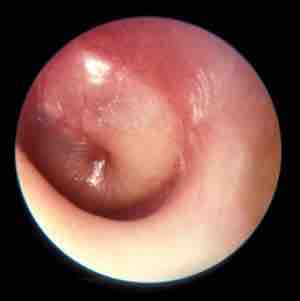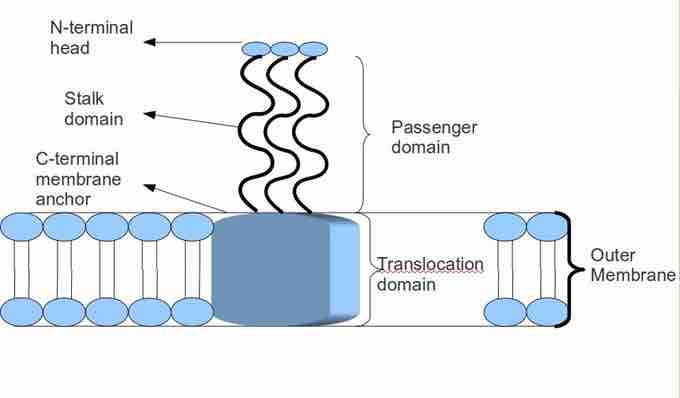Otitis media is inflammation of the middle ear . It occurs in the area between the tympanic membrane and the inner ear, also effecting a duct known as the eustachian tube. It is one of the two most common causes of earache - the other being otitis externa. Diseases other than ear infections can also cause ear pain, including various cancers of any structure that share nerve supply with the ear. Though painful, otitis media is not threatening and usually heals on its own within 2–6 weeks. Typically, acute otitis media follows a cold. After a few days of a stuffy nose, the ear becomes involved and can cause severe pain. The pain will usually settle within a day or two, but can last over a week. Sometimes the ear drum ruptures, discharging pus from the ear, but the ruptured drum will usually heal rapidly.

Acute Otitis Media
This is a view of the tympanic membrane showing inflammation and redness, typical of acute otitis media.
Otitis media is most commonly caused by infection with viral, bacterial, or fungal pathogens. The most common bacterial pathogen is Streptococcus pneumoniae. Others include Pseudomonas aeruginosa, nontypeable Haemophilus influenzae and Moraxella catarrhalis. Among older adolescents and young adults, the most common cause of ear infections is Haemophilus influenzae. Viruses like respiratory syncytial virus (RSV) and those that cause the common cold may also result in otitis media by damaging the normal defenses of the epithelial cells in the upper respiratory tract. A major risk factor for developing otitis media is Eustachian tube dysfunction, which leads to the ineffective clearing of bacteria from the middle ear.
Otitis media caused by bacterial infections are due to Trimeric Autotransporter Adhesins (TAA; proteins found on the outer membrane of Gram-negative bacteria . Bacteria use TAAs in order to infect their host cells via a process called cell adhesion. TAAs are virulence factors; an infective agent that infects the host cell by attaching to them and secreting the virulence factor by a secretion pathway. The UspA1 protein domain is a TAA found in the bacteria Moraxella catarrhalis, which causes middle ear infections in humans.

Trimeric Autotransporter Adhesin structure
The structure on the top (outside) of the outer membrane is a TAA protein. Various parts of the TAA are labelled, including the N-terminal head, stalk domain and C-terminal membrane anchor.